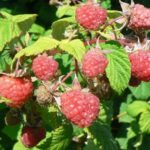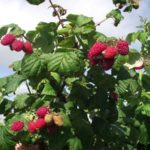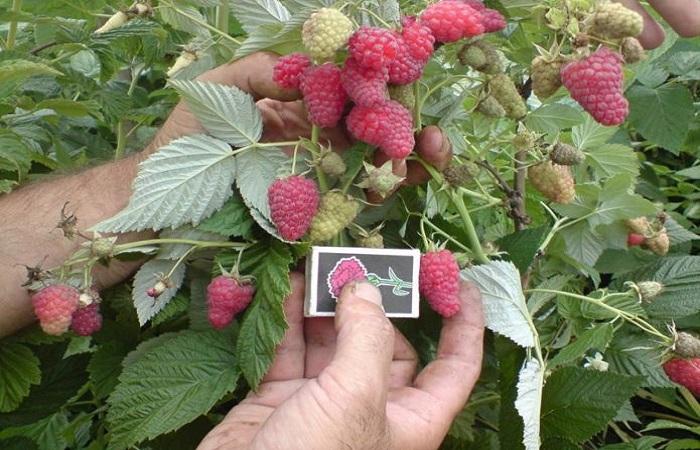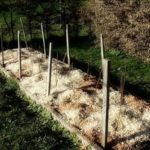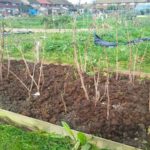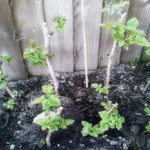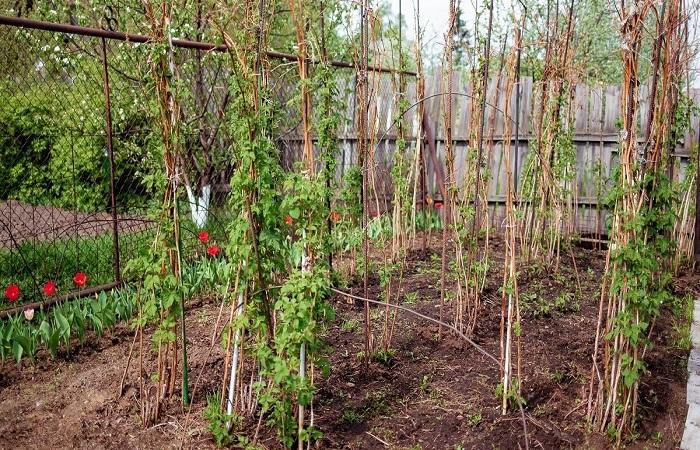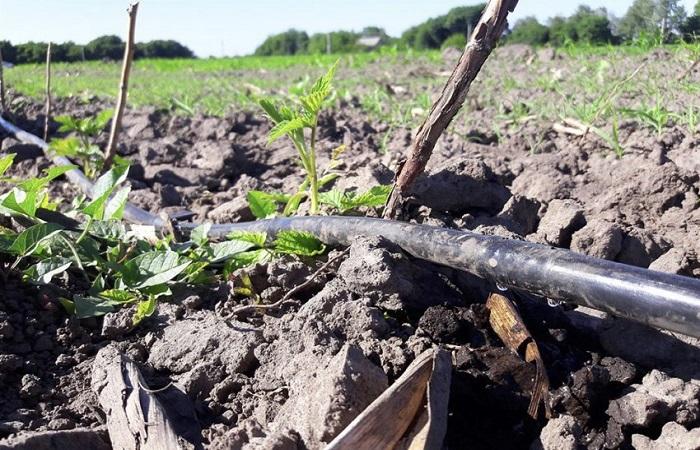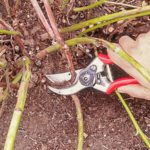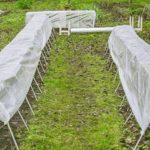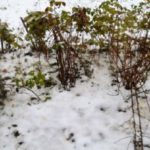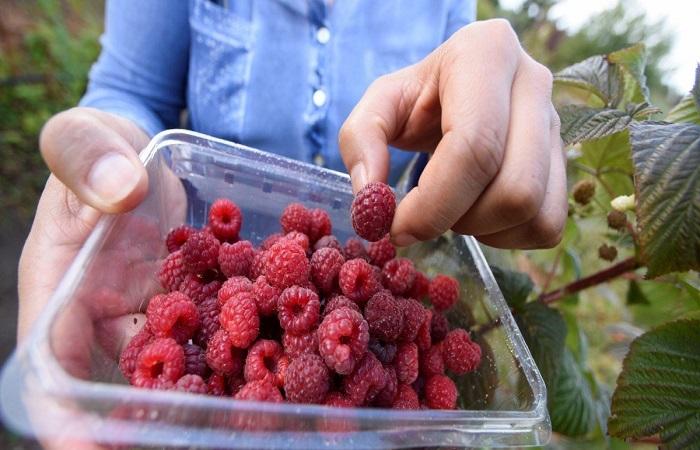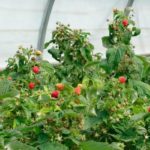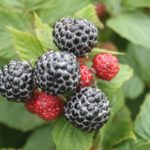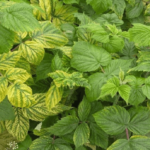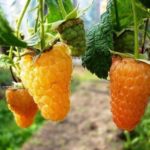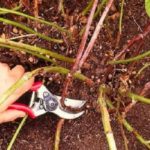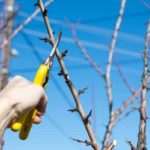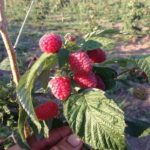Raspberries are a berry that is in demand among gardeners. The list of cultural varieties is impressive, each of them has its own characteristics. Not only external parameters may differ, but also the specifics of cultivation. A special type of raspberry is Brigantine, the description of the variety should be carefully studied before you start propagating it in your summer cottage.
Description and characteristics of Brigantine raspberries
Brigantine belongs to the mid-late raspberry varieties, which are grown in private gardens and agricultural enterprises. The bushes are relatively compact in size, their height ranges from 1.5 to 1.8 meters. Young shoots are formed in 10-12 pieces on each bush. Young stems are straight, purple-colored, and spiny. After a year they become brown in color and denser in structure.
The leaf blades are curved with downward edges, dark green, corrugated. The laterals are green in color, sometimes mixed with red anthocyanin pigmentation. The most developed fruit branches can contain up to 16 ovaries. The number of laterals can reach 12 pieces.
Raspberry fruiting begins the next year after planting. The gross yield from 1 bush, on average, is 2 kilograms of berries. About 55 centners of fruit can be collected per hectare per season.
Advantages and disadvantages
The advantages of Brigantine raspberries are:
- disease resistance;
- saturated color;
- suitability for use not only fresh, but also for preparations;
- good yield;
- frost resistance;
- strong immunity that protects raspberries from fungal infections;
- ease of care.
Among the shortcomings of Brigantine, gardeners note:
- average organoleptic indicators (tasting rating of the product was only 3.8 points out of 5);
- weak aroma;
- lack of maintenance.
Brigantine has more advantages than disadvantages. And if not everyone will like it fresh, then it will make excellent preservation.
Growing the variety
To land the Brigantine, you need to choose the right place. The process of picking seedlings is not complicated and does not take much time.
Choosing a location and seedlings
For raspberries of this variety, areas that are sufficiently illuminated by the sun and protected from the wind are suitable. Suitable soil is light or medium loam, which is enriched with all the substances necessary for Brigantine. And in order to get a rich harvest of fruits, gardeners recommend installing a trellis in advance.
When to plant
The best time for planting raspberries of the Brigantine variety is the end of September, the first ten days of October. Before picking, it is recommended to shorten the seedlings: their length should not exceed 50 cm. Pruning increases the likelihood of successful establishment of the crop and the formation of a strong root system.
Landing algorithm
To plant raspberries you need:
- Make holes in the ground in a pre-designated area. The depth of each hole should be such that the raspberry roots are completely hidden in it.
- Sprinkle the roots of the seedlings up to the neck with soil and lightly compact them.
- Water the plants - each bush will require up to 5 liters of water.
The distance between seedlings should be 0.8-1 meter, between rows - 2 meters.
Further care of the crop
Unpretentiousness is the main characteristic of Brigantine in terms of care. For growth and normal development, she will need care that does not require any extraordinary measures.
Watering and fertilizing
If the season is rainy, the raspberries will have enough moisture obtained from the precipitation.But during drought, the crop will definitely need additional irrigation. 1 bush will need 10-15 liters of water; it is important that the soil is moistened 30-40 centimeters deep.
To fertilize the crop, it is advisable to use:
- humus;
- compost;
- crushed plant components (sawdust, leaves, buds);
- rotted leaves.
On a note. The first fertilizing is applied in the spring, before the start of the growing season. Nitrogen fertilizers are used to stimulate the plant to gain green mass. In the fall, it is advisable to add superphosphate.
Trimming
Pruning is carried out in the spring, immediately after the snow melts. Weak or dead shoots are removed at ground level. On each bush, 15-20 of the hardest and healthiest stems are left until the strongest top point.
In July, the shoots of the main stem need to be pinched. The last pruning is done in the fall. Then you should remove broken, diseased or depleted shoots. As a result, a bush with 15-18 of the strongest stems remains for the winter.
Preparing for winter
Brigantine tolerates cold well, so it does not require special preparation for winter. But you can cover the bushes with polyethylene for this time, and cover the roots with straw or sawdust.
Diseases and pests
The culture is resistant to many diseases, but it is not always possible to completely protect it from phytopathologies. Most often, she is exposed to the following diseases.
| № | Plant pathology | How to treat |
| 1 | Stem fly | Bordeaux mixture, Confidor, Karbofos. |
| 2 | Gall midge – stem, shoot | "Calypso", "Karbofos" or pruning damaged branches. |
| 3 | Raspberry beetle | "Fufanon", solution of potassium permanganate, infusion of tansy herb. |
| 4 | garden weevil | “Bi-58”, “Karate”, chamomile infusion, garlic solution. |
The culture is resistant to other diseases due to its strong immunity.
Harvesting and storage
The fruiting period of Brigantine raspberries begins around August. From this time on, the berries can be harvested (canned) or frozen. This way they will retain their properties for a long period of time - over 6 months. Fresh fruits can remain suitable for no longer than 1 week, and only when stored in a cold place.
Brigantine is a popular raspberry variety, which is characterized by stable fruiting and a rich harvest. To grow it in a summer cottage, it is enough to allocate an optimal place for the shrubs and periodically devote a little time to caring for the fruit and berry crop.

